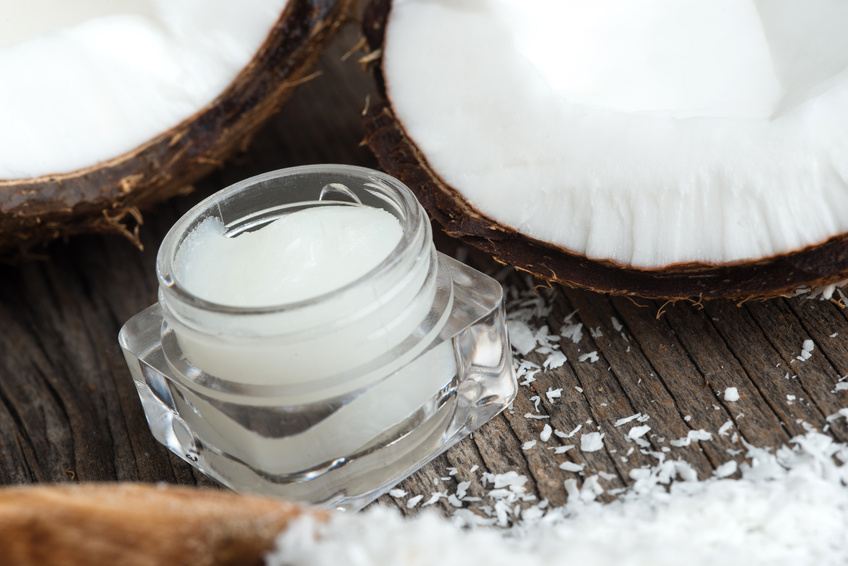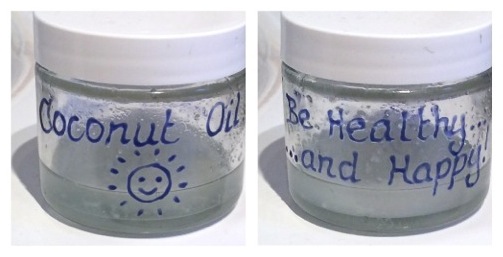My wife painted a small glass jar in which I keep coconut oil when I travel. I love the sentiment on the back side of the jar. You might have read, as I have, of the countless uses of coconut oil. I use it as a cooking oil, a dietary supplement, a skin moisturizer and, recently, when I learnt that it has natural anti-fungal properties, I used it to treat ringworm.
I’ve had the infection a few times in the past and normally gone to the local doctor to get a prescription for a cream to clear it up. Now, wary of prescription medications as they can contain nasty, artificial chemicals that strain the body as much as they cure it, I sought a natural treatment for the ring-like rash on my thigh.
What is ringworm?
Ringworm (also know as tinea) actually has nothing to do with worms. It’s a fungal infection that normally thrives on warm, moist skin and is usually caught through direct skin contact, sharing of objects like towels, or even from pets.
What’s the standard treatment?
Normally an anti-fungal cream would be used to clear up ringworm. One example I easily found on the internet is Lotrimin. The ingredients are listed as:
Benzyl Alcohol; Cetyl Alcohol; Cetyl Esters Wax; Octyldodecanol; Polysorbate 60; Sorbitan Monostearate; Stearyl Alcohol, and; water.
I picked one of these ingredients at random – Sorbitan Monostearate – then sought out the MSDS (Material Safety Data Sheets) for this product online and found the following in ‘Section 4: First Aid Measures’ in th case of skin contact;
Wash off immediately with soap and plenty of water removing all contaminated clothing and shoes. Get medical attention if irritation develops. Consult a physician if necessary.
and in ‘Section 7: Handling and Storage’;
Safe Handling Advice – Wear personal protective equipment. Avoid contact with skin, eyes and clothing. Keep away from heat and sources of ignition. Do not ingest. Do not breathe dust. Handle in accordance with good industrial hygiene and safety practice.
And this is in a cream we’re supposed to rub into our skin! I guess it’s in such a small dose not to be really dangerous but, all the same, I was concerned.
What alternative treatments are there?
Sunwarrior.com lists 50 of the best uses for coconut oil. Number 14 is as a treatment for ringworm. It also recommends using a little tea tree oil at the same time.
Alice’s Kitchen lists 52+1 reasons to love Coconut Oil (and your pets too!)
And in a list on Mercola.com, Countless Uses for Coconut Oil, Dr. Mercola includes the following:
Fungal and/or yeast infections, such as athlete’s foot and ringworm. For fungal infections, you can mix in a small amount of oregano oil or tea tree oil
So, apparently, coconut oil has natural anti-fungal properties.
Remember the warnings about Sorbitan Monostearate above? Where it might irritate the skin and is hazardous to ingest? Well, I certainly have none of those concerns with coconut oil. I felt like giving it a go.
Treating ringworm with coconut oil
I started applying a few drops of essential oil of tea tree followed by a smearing of coconut oil every morning before work and every evening before going to bed. Within a few days the redness of the infection had reduced and in about 7-10 days, the infection was gone. Great! It was so easy.
As mentioned at the beginning of the post, I carry coconut oil with me whenever I travel [note that I carry it in a glass jar rather than a plastic container as part of my effort to use use10percentless]. I’m so glad that this very simple, natural oil solved yet another problem for me.
Related Links
- UK National Health Service information on ringworm
- Here’s an interesting article from Alice’s Kitchen with an enormous number of uses for coconut oil – http://www.alices.kitchen/cookware/what-is-coconut-oil/
- Does coconut oil go off? Here’s an interesting article – Does Coconut Oil Go Bad? – from Kitchen Ambition
Please share any stories you have, successful or otherwise, related to coconut oil, in the comments below. It would be great to hear them. Thanks.


Zoey from The Babble Out put me onto their article about ringworm. It’s a good article and well worth a read if you have this problem – see Everything about ringworm (Dermatophytosis) and how to get rid of it
I’m maintain my occasional ringworm outbreak using a generous application of coconut oil followed by rubbing in a couple of drops of tea tree oil and a couple of drops of lavender oil. Works well for me but we all might be different.
Michelle from thewayuthink.com told me about their article on coconut oil and it’s very extensive – Pure Coconut Oil 101: Everything You Need To Know And 64 Ways To Use It
I’m not sure I’d try all of the 64 ways (and some seem doubtful), but I certainly use coconut oil for a lot of things.
Thanks for the tips Michelle.
Alice from Alice’s Kitchen contacted me to suggest her article called – 52+1 reasons to love Coconut Oil (and your pets too!). Some pretty interesting uses listed here. It would be easy to start thinking that coconut oil is a wonder substance that will fix anything. We need to be realistic. It’s a good oil that can be helpful in many circumstances. It can’t do everything. It is useful.
I’ve added Alice’s into the article above and fixed some of the links that have disappeared over the past couple of years. Thanks for the prompt Alice!